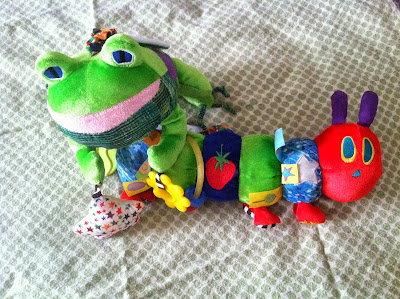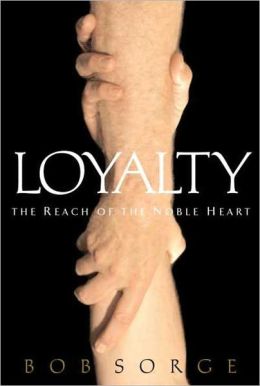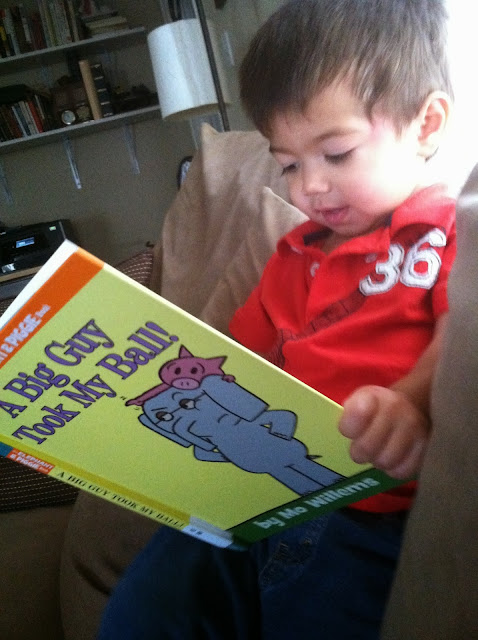by Bob Sorge
Published by Oasis House, Kansas City, MO
I first opened my mind to this book for two words on the cover, neither of which was the title. I will always respond excitedly to the name Bob Sorge. My introduction to Sorge's work was his 2001 best-seller Secrets of the Secret Place, quite simply the best resource I have ever found about cultivating personal time with God. Highly applicable and spiritually boosting. I have probably recommended Secrets more than any other faith-focused book.
So I came upon this more recent work, Loyalty: the Reach of the Noble Heart (2004) with great expectations. Again, it wasn't the title that compelled me. How much could be made of a subject that Scripture, so I thought, pays scant attention to? Tell me honestly, fellow Bible scholars, how many verses on loyalty leap to mind? Go ahead, take your time.
If the title provoked any emotion in me, it was guardedness. The only Bible study I knew anywhere in the vicinity of loyalty was John Bevere's Honor's Reward. And that is a book which pounds the message of "submitting to God's sovereign arrangement" pretty hard. I wondered whether this going to be another 300 pages of uppercuts with "just take it so that one day you get to be the authority" printed on the gloves. (Sorry John, that last comment was more indicative of my immaturity than yours.)
Sorge quickly proved this fear false. From the first page, he makes his case for loyalty as a central component of God's relationship with us on the back of 2 Chronicles 16:9:
For the eyes of the Lord run to and fro throughout the whole earth, to show Himself strong on behalf of those whose heart is loyal to Him.
Loyalty, Sorge argues, is godliness itself. It is not a ploy of men to control the masses, at least not in its original form. Loyalty began in the Trinity as affectionate allegiance between the Father, Son and the Spirit. In other words, not only did the Godhead to commit to one another in will but in emotion and mind as well.
Affectionate allegiance: this is an important definition because it cuts loyalty out from the herd of relationship words that tend to run together in our use: love, commitment, faithfulness, devotion, submission, surrender, etc. I might mean mental and emotional investment in a relationship when I telling my brother I am loyal to him, but he might misconstrue my meaning as a surrender of my will to his. You can see the misunderstandings soon to follow that failed communication.
After mooring his thesis to both orthodoxy and clarity, Sorge then plunges into the sea of loyalty and disloyalty, with examples all throughout the Bible.
God is always searching, and the object of His search is for a loyal man or woman. Once He finds a Noah, He can send a flood. Once He finds a Joseph, He can give Pharaoh a divine dream. Once He has an Elijah, He can turn a nation around. When He has a Jesus of Nazareth, He can save the world.
Sorge pulls fresh insights from these high profile personalities explaining how the key to their selection for great exploits was their loyalty or affectionate allegiance to God. But no one's story, besides Jesus', is more probed than that of King David, the man in whom God saw a mirror of His own heart.
David's story becomes the center of gravity for Loyalty. Rightly so, for David could demonstrate loyalty even toward people trying to kill him (Saul) and become extremely close to those who could have been his rivals (Jonathan). Sorge proclaims David the gold standard of loyalty and goes so far as to use the term "God's Davids" to refer to any leaders deserving of loyalty. He even studies David's psalms for evidence of criteria for choosing leaders.
But the book doesn't photoshop David's warts out. I appreciate Sorge's honest treatment of the king. He is portrayed as someone who learned loyalty in stages, failed a few tests and even stumbled others in their learning. This makes David feel closer, as if he would nod sympathetically were he to have a conversation with you about your struggle to be loyal.
Also accessible are the satellite characters that orbit around David: Amasai, Ahithophel, Joab and Absalom. Sorge takes the time to examine each one, even when the character occupies just a handful of verses to paint a picture of loyalty that one can frame one's own life in.
Even vengeful Absalom is shown to be "a man of like passions as we." Who couldn't relate to being mishandled by an authority figure as David botched his discipline of Absalom? Which one of us could fault Absalom for holding onto the offense after not getting an apology or being invited to reconcile? Could we too be so possessed by a grudge that we would lash out in rebellion against an authority? Many of us would have to say, "Been there. Done that."
Sorge's loyalty focus was so illuminating, it shed new light on all-too-familiar characters. I was so inspired by his study of Abraham and Lot and then Naomi and Ruth that I used these stories to preach a
sermon on loyalty. The sermon connected well with the congregation.
True to the endtimes enthusiasm that marks most teaching from the International House of Prayer (Sorge has been associated with the movement for decades), the last few chapters are reserved for loyalty's role in hastening the close of the current age:
Mark my words, loyalty is a character quality that will receive increasing emphasis in the last days. Its emphasis will be an absolute necessity because of the profusion of disloyalty that will spatter the end time landscape.
He makes some good points about how the prophet Malachi foresaw the return of the hearts of fathers to their sons and vice-versa and how this showed that the return of the spirit of Elijah brings about a generation of loyalty. But I felt this comes across as a bit of a forced attempt to pull in Revelation and eschatology into a subject where it just doesn't belong.
And what of my misgivings about loyalty being another guise for pro-authoritarian teaching? Turns out I was too quick to judge. Sorge is very balanced in his counsel on when and how to exercise loyalty to a leader as is demonstrated in this passage:
Be cautious around a leader who requires loyalty. Wise leaders will watch for and honor loyalty but they cannot require or demand it. Anyone who requires loyalty doesn't really understand it and is using the requirement as a smokescreen to hide their insecurities.
…If you don't feel loyal toward the one who is over you in the Lord, that does not necessarily mean there is something wrong with you. It may mean that loyalty will take time to develop. The Lord will not require you to feel loyalty to every leader in your life; but he certainly will require you to show commitment to your leaders.
In other words, loyalty is ultimately given from the heart. Because it is affectionate allegiance, it is result of relationship rather than a substitute for it.
I should explain that I could never have reaped so much benefit from reading this book on my couch. My study was greatly enriched by reading and sharing it with a group of men. There is just nothing like a meeting of diverse minds to spark critical thinking about material. At times the discussion questions at the end of each chapter launched us into hour-long chats as we reacted to the ideas and compared them to our experiences.
Whether reading with others or solo, I recommend taking your time with Loyalty. Chances are you will never come across another book on the subject. So let the ideas soak in as much as possible.

















